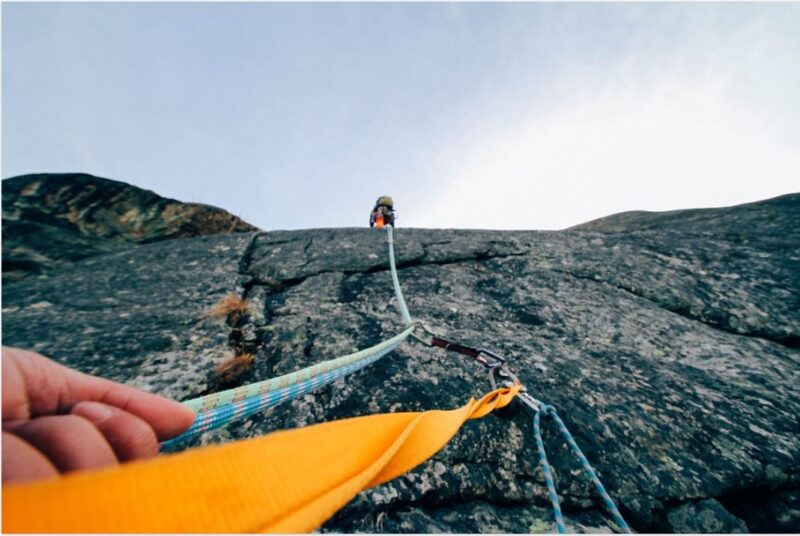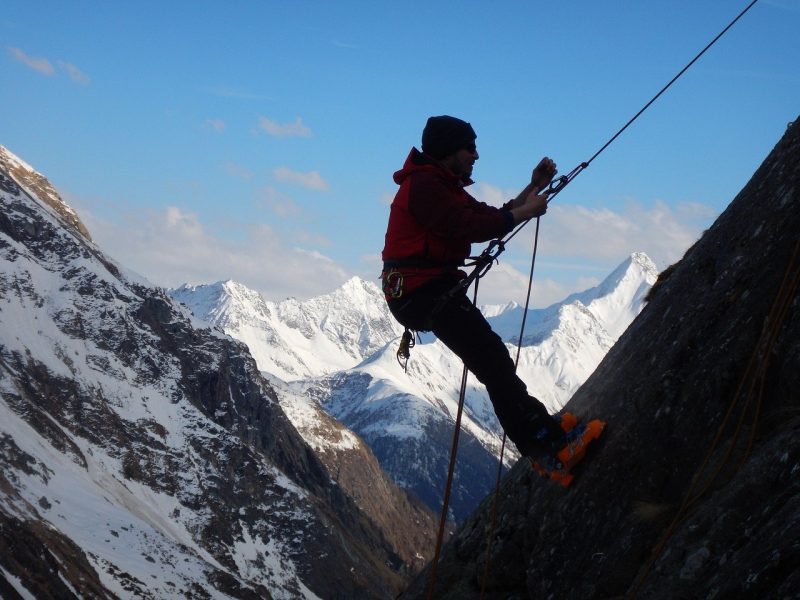As a climber, filming your journey is one of the best ways to remember it. Photos and videos are excellent souvenirs and ways to relive the moment. For most people, climbing footage is good promotional material. However, climbing itself is dangerous, and filming throughout can make things worse. You have to know how to properly and safely do both.
That’s why in this guide, we’ll discuss what you should focus on in your footage and provide you with tips and techniques to avoid harming yourself and damaging your equipment.

Essential Factors For A Good Climb and Footage
Whichever climbing destination you plan to go to, there are three main factors you need to remember when climbing. These will ensure that you have a successful climb and a good film. Always remember the following:
Safety
Safety first. This is true in any shoot or any climb. Your safety should be your utmost priority. Don’t sacrifice it just for a good or excellent shot or angle. Here are some additional things to keep in mind:
- Plan and prepare in advance. Check necessary details of your climb, like the weather conditions on your preferred date. See if there are also available reports and updates about climbing conditions that may affect general safety. For filming, prepare all equipment you need for your shoot. At the same time, ensure that you’ll be able to carry them with you without a problem when climbing.
- Determine how you’ll film. Know how you’ll do it simultaneously with your climb. You can practice rope management that will ensure your safety so you can focus on shooting. In case of mishaps, make sure you know how to self-rescue.
- Bring a friend or partner. One way to ensure that you’ll get good footage and climb safely is to bring someone else with you. It can be someone who’ll support and look out for you as you climb and film or someone who’ll just film.
- Be aware of others. Be conscious of the safety of other people with you. Be extra careful not to initiate anything that may cause harm to other climbers or your colleague.
Gears
Choose your gears correctly, both climbing and camera gear. Although this will depend on your personal factors, here are some items that will come in handy in climbing shoots:
- Other types of harness: You might want to consider bringing and wearing a chest harness to give yourself more positioning options.
- Rappel device: Simply to ensure a more safe climb. You can use this to belay safely.
- Static rope: Instead of a dynamic rope, a static rope will be easier to move up and down.
- Ascenders and raiders: These can make moving up and down much easier when combined with the static rope.
- Camera bag: Ensure to bring a bag that you can quickly wear and won’t hinder you with climbing. It’s best to bring and wear a waist-mounted camera bag for ease of access.

Story
Video-wise, this is the most crucial element of your climbing footage. It’s all about the story. Take time to plan ahead on what your film will be about. What message do you want to express? What do you want to say? What kind of feelings do you want your viewers to have?
Additionally, plan on how you’re going to achieve this. The flow, the people involved, and the balance in the shots and clips. Lastly, to fully express your story, you need to edit it. You should know how to make videos louder, how to insert good transitions, etc.
For a great video editing experience, here is some video software you should try:
- Magisto – This is a good video software if you plan to make your climbing footage a social video. Magisto partners with many social media networks like YouTube and Facebook, so it’s optimized to deliver engaging content. It’s downloadable for desktop and mobile devices and offers numerous effects and templates.
- VideoStudio – It’s known for making movies and is a pro video editor packed with powerful effects and tools. There are hundreds of video effects and filters available as well. It’s easy to use, especially for beginners.
- PowerDirector – This is jam-packed video software with a neat and straightforward interface. It has a stock library and numerous templates available. It also has advanced editing options like LUTs and color matches.
Tips for a Safe Climb and a Good Film
Study your route in advance. This way, you can decide where to focus your shots and how to position yourself during the climb. Ensure you’re also completely geared up. Wear high-quality climbing shoes, rope, helmet, carabiners, anchor, and more, and make sure to communicate with your colleague clearly all the time to ensure maximum safety.
Wearing bright clothing is a good idea as well. If you’re the climber and the filmmaker simultaneously, wearing something bright will make you pop against the landscape.
Remember to study climbing techniques related to maintaining balance and others. These techniques include:
- Edging and smearing
- Footwork tactics like keeping them still and looking for foot placements.
- Leaning over and using body weight as a counterbalance.
- Keep your eyes on the walls.
- Allow yourself to have a good rest.
Shoot the most difficult shots first and vary the shots, don’t focus on yourself or the climber only. You can make close-up captures and show the beautiful landscape in some, and try to film a variety of climbing styles as well. When you showcase the different styles of climbing in your footage, it will make things more interesting.
Also, pay attention and be creative with angles – no one wants to continuously watch a film focused on one angle. Think about filming various movements, silhouettes, and other elements. One good angle is the angle slightly above and to the side of the climber. This way, the face and other body parts of the climber can be captured.

Conclusion
There are many things to consider if you’re planning on making climbing footage, and all are important. Overall, the primary purpose of the things mentioned in this guide is to ensure your safety while filming and produce an excellent film. Make sure to stay safe while climbing and filming.

No Comments